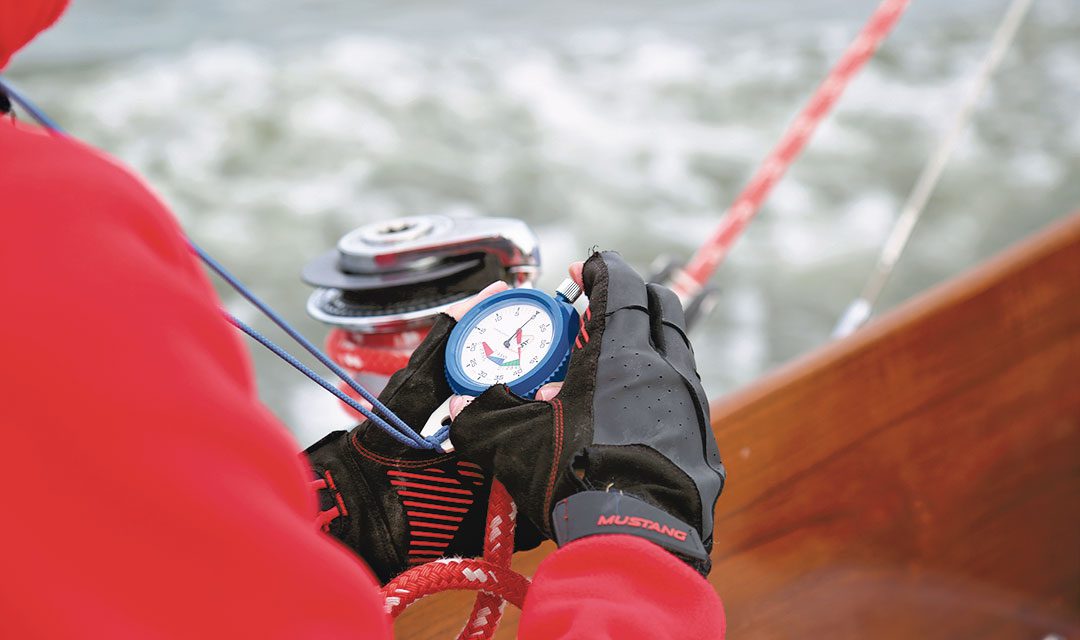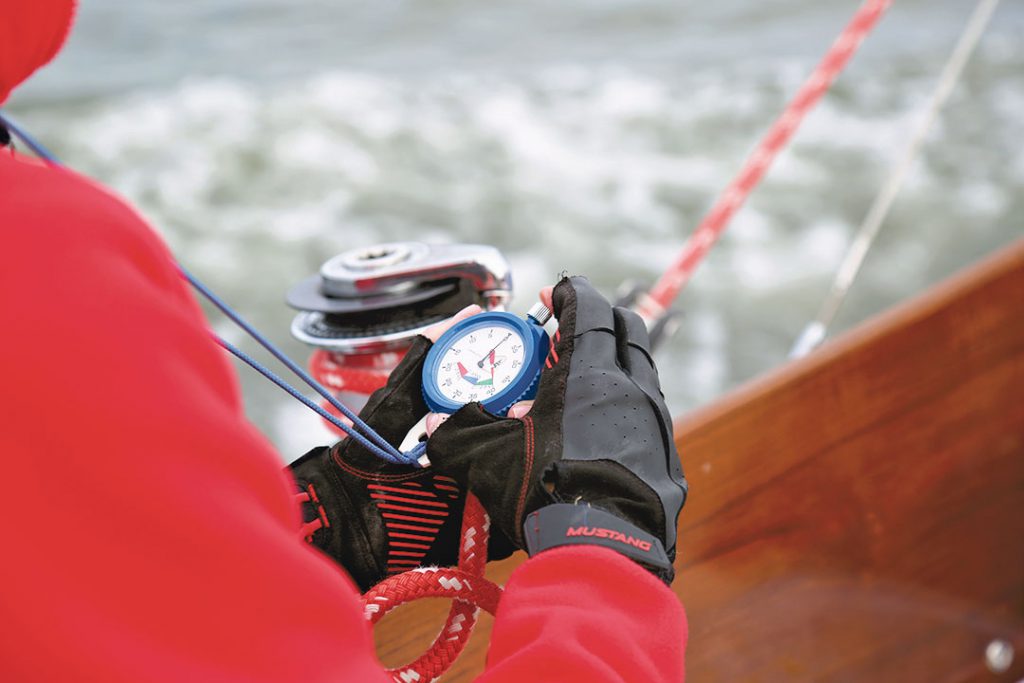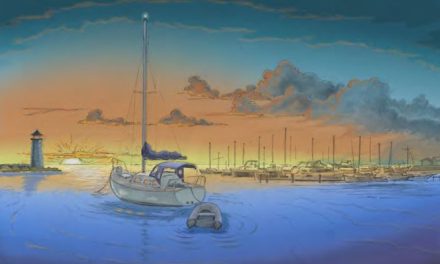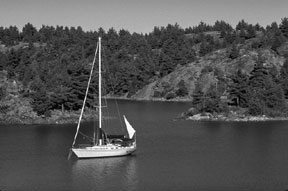At the 20th annual Good Old Boat Regatta in Annapolis, three Pearson Vanguards shine on.
There is an inside joke that some members of my husband’s family will race raindrops down a windowpane. So, you can imagine the letdown when my sister-in-law, Cindy Weber, announced in August that Fling, her 1964 Pearson Vanguard, was the only boat of its type entered in the 2019 Good Old Boat Regatta.
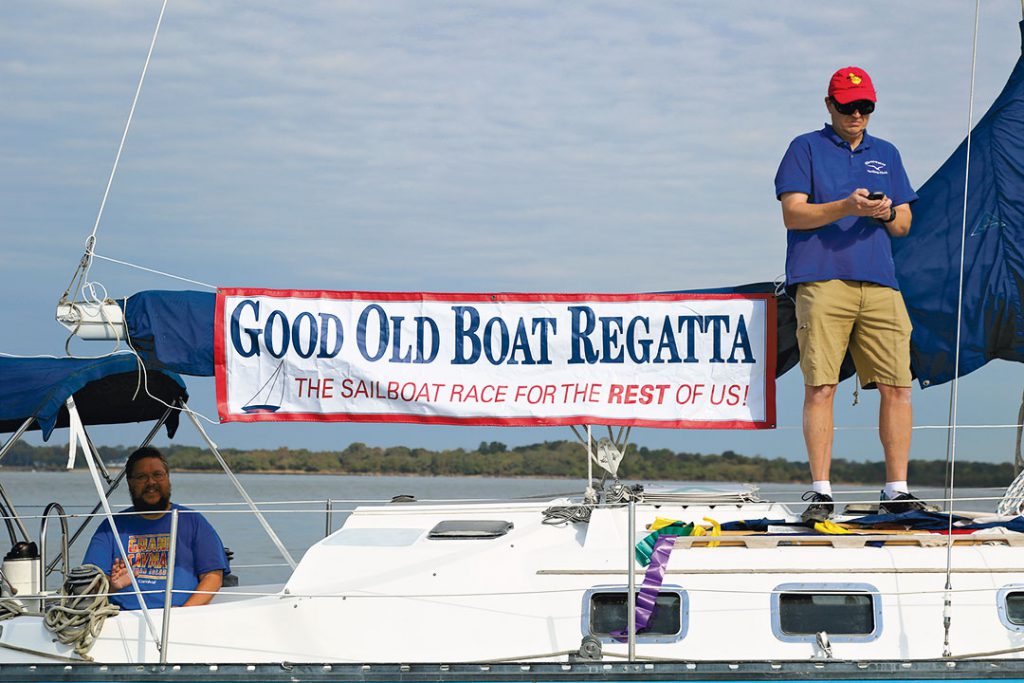
My husband, Johnny Clarke, was to skipper for this race, and Cindy, her husband, John Weber, and I were crew. Then, a week before the regatta, Cindy got word: two more Vanguards had registered in the full-keel class. The prospect of a real race lit the competitive fires in Fling’s crew.
And a real race it was—a great one—among three closely matched Pearson Vanguards sailed with verve and skill by people who, as it turns out, have remarkably similar stories about how these boats have played pivotal roles in their sailing lives.
Of course, we weren’t the only ones out there for the 20th annual Good Old Boat Regatta sponsored by the Shearwater Sailing Club. Lining up at the start off Hacketts Point just north of Annapolis on an early October Saturday were a half-dozen Cal 25s and an assortment of other fin-keel boats, including a Valiant 37, a Tartan 34C, and a Ranger One-Ton.
“It all started off with a friend of mine, he had a Triton and I had a Cal 25,” says Charlie Husar, the race’s organizer, who also scores for all the cruising one-design classes in the Chesapeake Bay Yacht Racing Association. “The big clubs in town stopped inviting older boats to their races, so this was kind of a rebellion. I just wanted to keep the fleets alive.”
After gaining permission and support from Good Old Boat to name the regatta, within five years as many as 90 boats hit the starting line. Participation has been dropping off steadily, though, and Charlie is hoping that younger sailors who are finding and fixing up good old boats will learn about the regatta and turn out for it (and the party afterward), which always takes place the same weekend as the U.S. Sailboat Show. “The only requirement,” Charlie says, “is that the first hull of a competing boat’s type has to be at least 30 years old.”
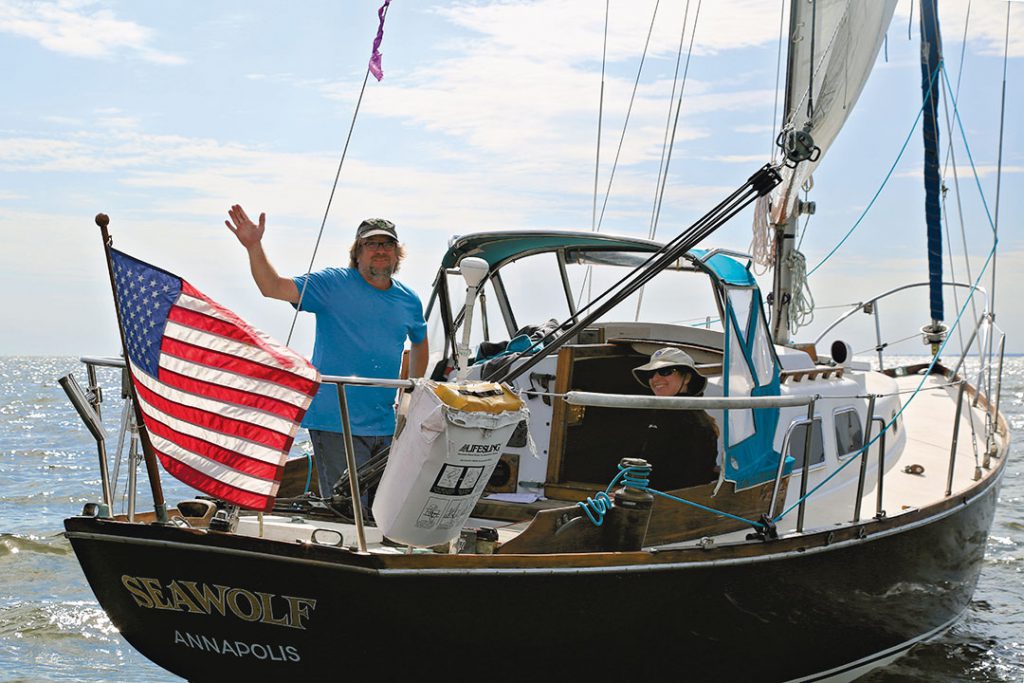
All the other good old boats notwithstanding, it was the Vanguards we were eyeballing as we milled about in the light air before the start. There was Seawolf, hull #244, owned by Mike Brown, sailing with his friend Kristen White. Mike’s father had bought the boat in 1969, and she was passed down to Mike, who had grown up sailing on her.
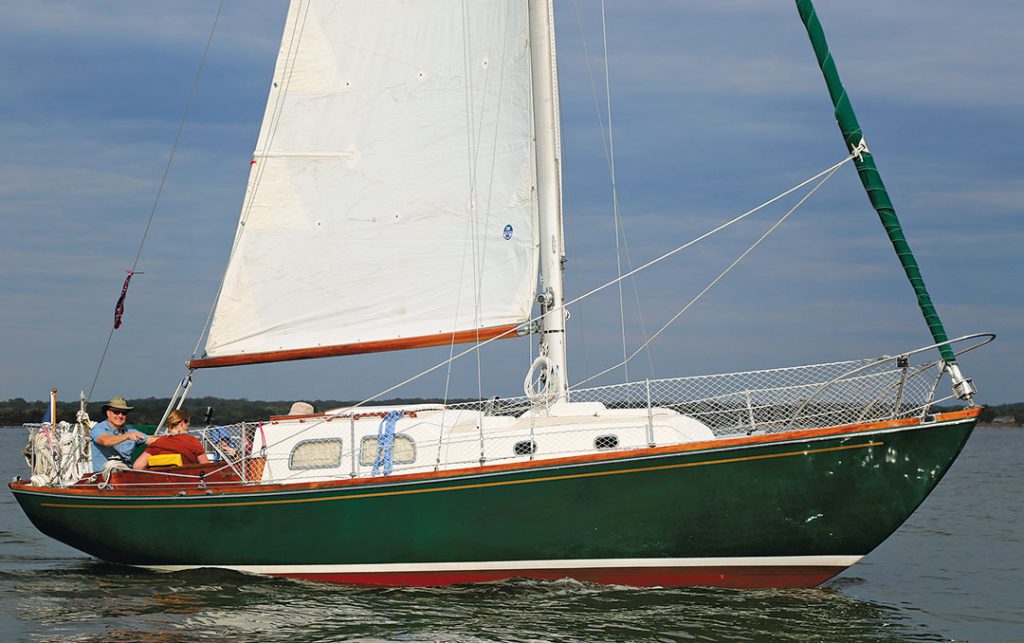
There was Scamp Too, hull #227, owned by Phil Beierl, who was sailing with his two sons, Daniel and Alex, his daughter, Katie, and his grandson, Liam. The original Scamp, hull #21, was the boat that Phil grew up sailing in Annapolis and later in Maine; now in Bucksport, Maine, she remains in the family.
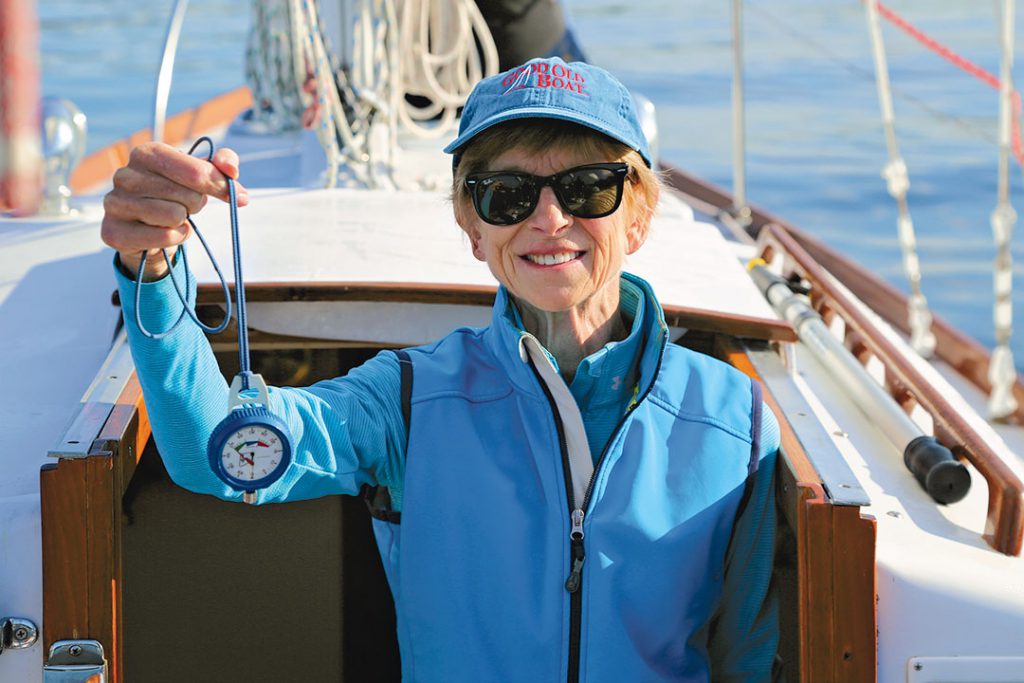
And there was Fling, hull #239, which my in-laws had bought new—“It was one of the big new designs,” my mother-in-law told me later—and on which my husband and Cindy had grown up racing and sailing.
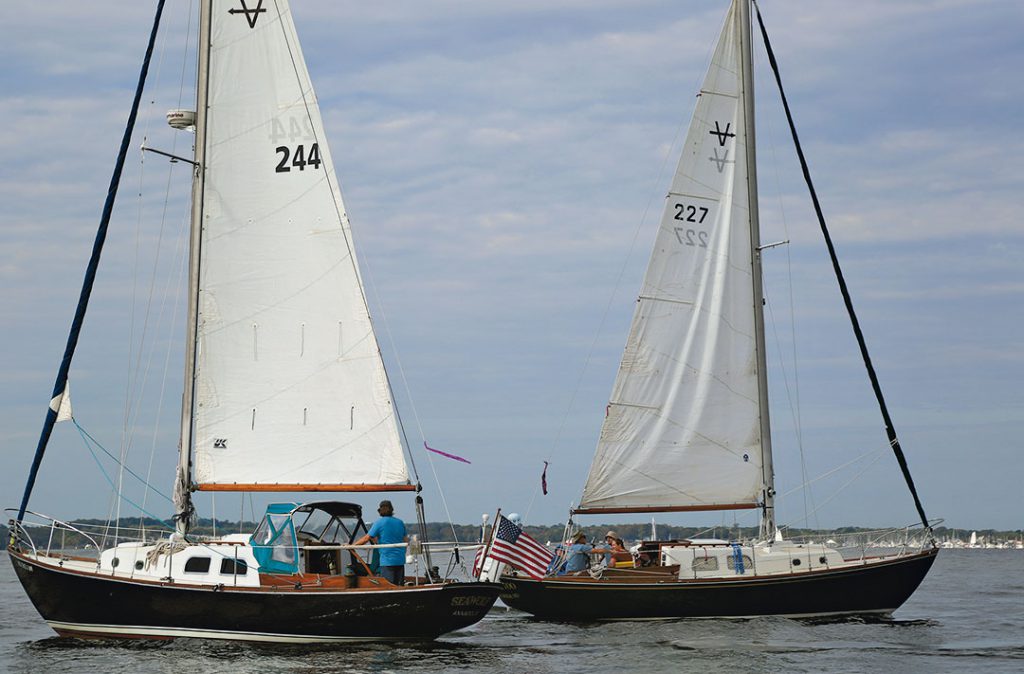
We all came together before the start, waving happily while sizing each other up. When the gun sounded, we were off under full mains, genoas, a swollen full-moon tide rolling down the Bay hard enough to tug crabpot floats under, and a zephyr of southerly that was supposed to max out during the day at maybe 8 knots.
Almost right away, Scamp Too committed to the right side of the course, while we and Seawolf worked the left. Our hopeful strategy was that the current in deeper water near the shipping channel would help lift us to the sole turning mark on the windward-leeward course, a red channel marker over by Kent Island.
Aboard Fling, we settled into a quiet intensity, watching the race unfold and worrying that our slightly smaller genoa would hamstring us in the light air. Similar to Seawolf’s story, Fling stayed in the family when Cindy took over the boat after her father died. She turned to Johnny to upgrade the boat, as he’d made a career in the boat service and repair industry.
They added a roller furling headsail and self-tailing winches to make the boat easy for her to daysail. They repowered, replacing the original Atomic 4 with a new 30-horsepower Universal M4-30. They Awlgripped the topsides and deck, refurbished the interior, added and replaced hatches, and upgraded the galley and hull interior coverings.
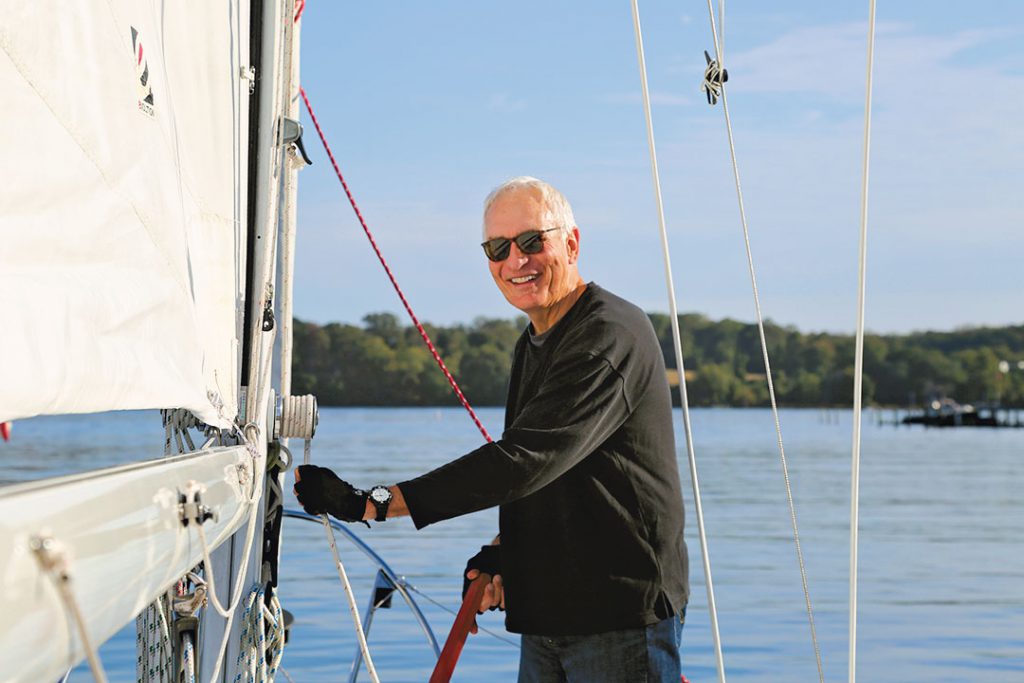
Though she used to carry the family around the Bay nearly every available weekend, these days Fling lives in quiet, well-loved retirement still on her home creek in Annapolis. Cindy and John take her for occasional daysails, especially when the wind is whipping up the Severn River, conditions the boat revels in. This was her first time in the Good Old Boat Regatta.
For Cindy, Fling clearly is a character and personality unto herself. “It would be fun,” she said in her email inviting us to race, “and Fling would love it.”
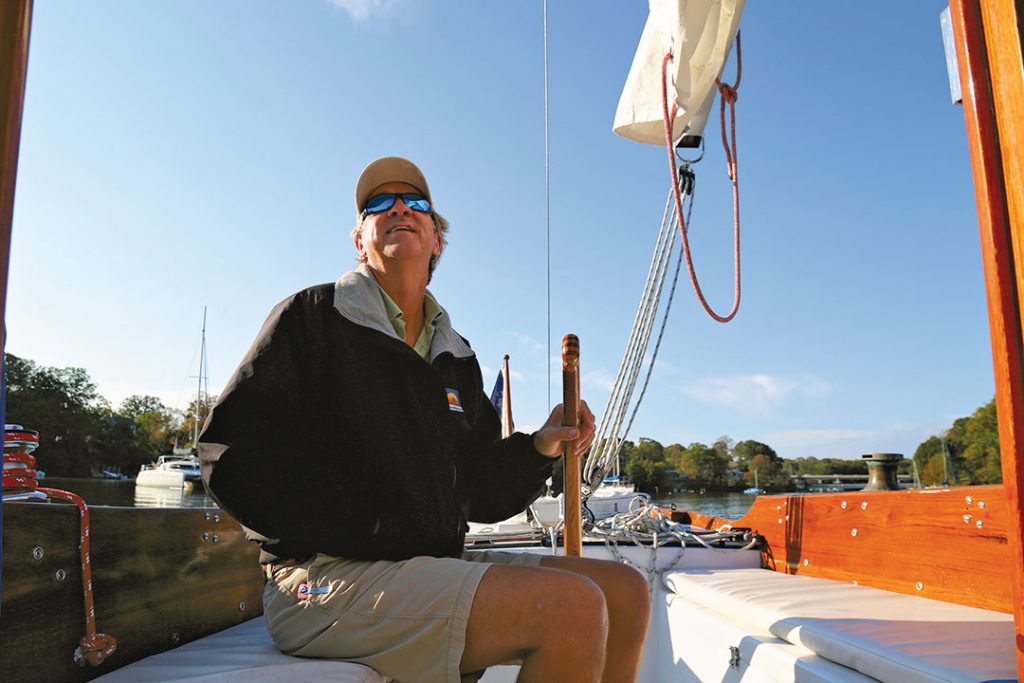
But as we closed with the turning mark, it was clear that we were in a horse race. Seawolf had led us just slightly tack-for-tack, and now, coming in literally from right field, Scamp Too was reaching for the mark while we sailed upwind, quietly cursing the current, which had not provided a boost as powerful as we’d anticipated.
Within a few boat lengths of each other we rounded, Scamp Too first and Fling sliding in next, just ahead of Seawolf. After rounding the mark and beginning the long trip back across the Bay to the starting line, the three boats were overlapped for a few moments, until Scamp Too took a deeper, dead-downwind angle toward the finish. On Fling we headed higher to compensate for our smaller headsail, while Seawolf took the middle road.
“These boats go better in heavier air obviously, but the lighter air makes for interesting sailing,” Phil said later. “I’m impressed we were so close despite splitting the fleet a couple of times. It certainly kept us on our toes.”
Phil grew up sailing the original Scamp, which his father bought in 1968, “back when having six berths was the definition of a cruising boat…We had a family with six kids, and we used to sail out of Lake Ogleton across the Bay.”
Eventually the family moved to Maine, and so did the boat. Years later, Phil returned to Annapolis and one day glanced at the classifieds and saw a Pearson Vanguard for sale.
“I wasn’t looking, I wasn’t even thinking it, it just sort of popped into my life,” he said. He went and saw the boat that same afternoon; the woman who owned it had suffered a serious injury in a motorcycle accident and was hurrying to unload it. It had sunk up to its cabin berths at the dock, but otherwise it was in decent shape, and he knew it had good bones.
He called Don Moyer at Moyer Marine—the Atomic 4 oracle and guru—and with his advice, consult, and parts, Phil rebuilt the engine. He replaced the fuel and water tanks, all mechanicals and electricals, and much as Cindy and John did with Fling, he upgraded and revamped the interior as well as the sail-handing gear to make it easy for him to singlehand. It took him three years of hard work. It was worth it.
“I’ve had a blast with it,” he says. “Maybe there’s a niggling dream of sailing farther afield, but what we’re using it for is sailing around the Chesapeake Bay, and I’ve kept it pretty simple. It’s great for my wife and I cruising or the kids and the grandkids, and there’s also enough room to take a crowd out for a daysail or a swim.”
He especially enjoys watching his grandkids live his own best memories, dragging their feet in the water from the leeward rail when she’s heeling hard in a nice breeze.
This was not the case, though, on the Chesapeake that day. There was a bit more breeze than we’d even hoped for, but even so, it was a nail-biting, slow-motion downwind leg. Two-thirds of the way to the finish, after jibing to avoid the enormous windbreak of an anchored car carrier in the middle of the course, we were by far the highest off the rhumb line to the finish but making good speed.
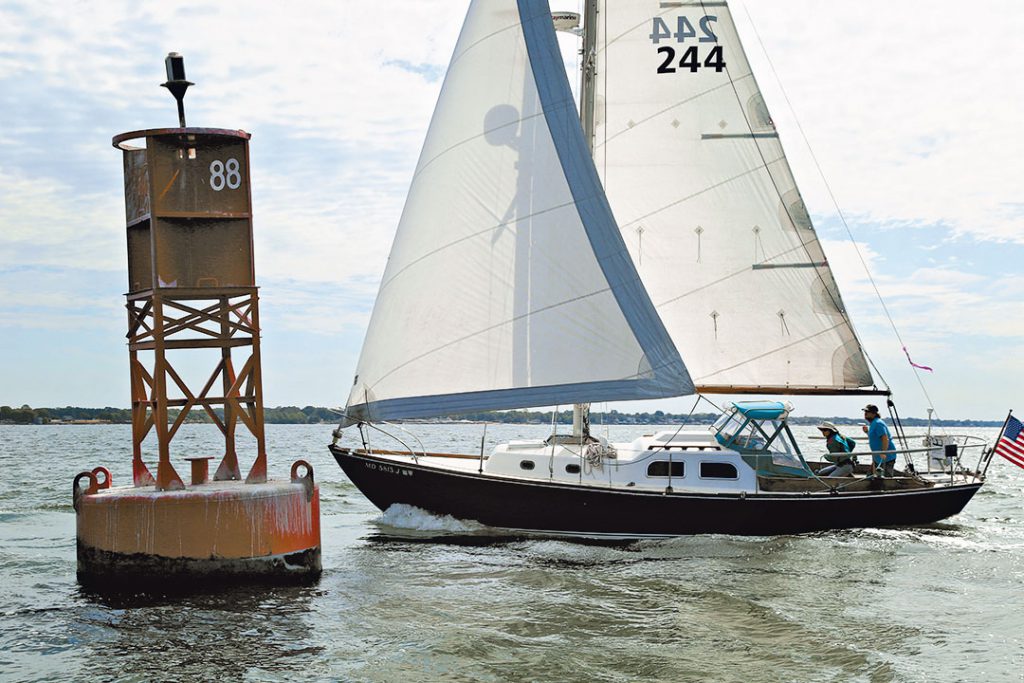
There was no way to be sure how it would play out. We watched as Scamp Too held her wing-and-wing strategy nearly all the way, looking for a while like it would pay for the win. But as we closed with the finish, it was clear that Seawolf, last around the windward mark, was going to be first across the finish. Fling crossed 54 seconds after her, and Scamp Too about a minute- and-a-half later.
“It was neat to see us all come together at the finish line,” Phil says. “That’s an indication we were all sailing well.”
“I don’t race the boat a lot, hardly ever,” Mike said later. “It’s really just used as a Bay cruiser. I set up the boat for singlehanding. I mainly sail it myself.”
Although he has spent a lot of time, sweat, and money upgrading Seawolf, including adding a new Moyer Marine-built Atomic 4, Awlgripping the topsides, adding a tiller pilot, beefing up the mainsail traveler, and adding a six-to-one mainsheet block system for ease of handling, Mike, like the others, doesn’t try to justify the time and expense as a rational thing.
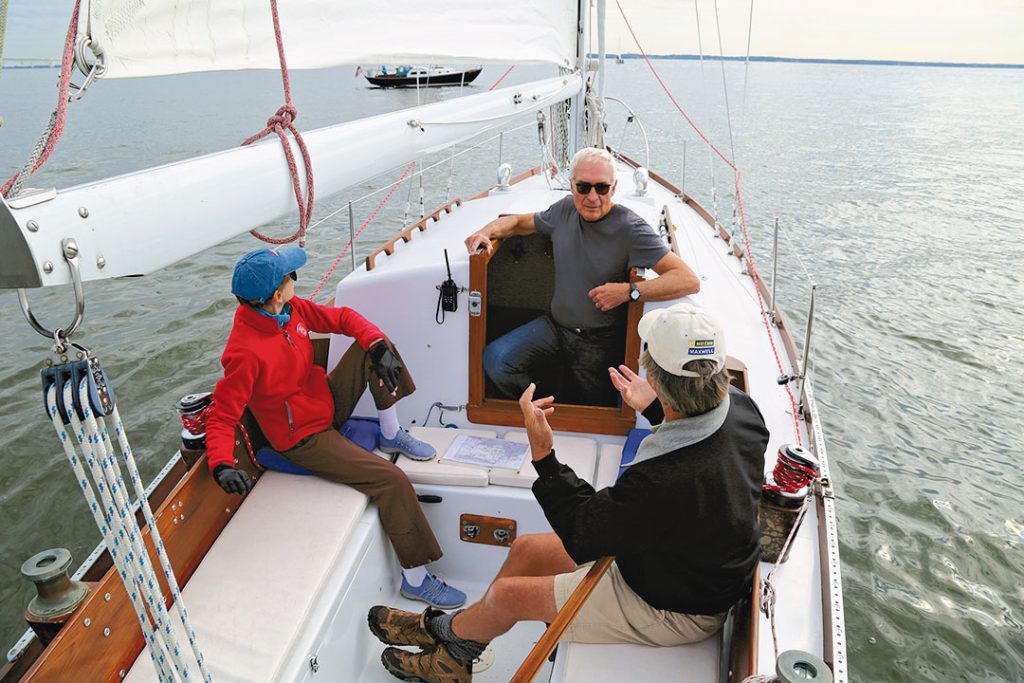
Like Cindy, Johnny, and Phil, he remembers well what it was like growing up Vanguard. And that long-term relationship and the memories the boats carry are as indelible as their classic Phil Rhodes lines.
“One of the things I really love about the boat is that it was my father’s, and when I was 14 or 15 years old, I was taking the boat out with my friends. I was sailing the boat before I had my driver’s license. I have great memories of sailing with my dad,” Mike says. “A lot of times sailing on the boat, I have these conversations with him.”
All agree the boat’s bulletproof construction, pragmatic and quite commodious interior, seakindliness, and easy handling—and on the used market, affordability—continue to make the Vanguard a great boat for young couples or families. But when you’ve been committed to a boat over two and three generations, there’s more to it than even all of those qualities.
“It’s a pretty boat. We just love the lines,” Phil says. “Scamp is a haze grey color, and she just looks like a seagull sitting in the water. I can’t keep from looking back and taking one last glance at the boat. Compared to modern boats, it’s what makes my heart go pitter-pat.”
This year’s Good Old Boat Regatta will be held October 10, the same weekend as the U.S. Sailboat Show, starting just off Annapolis. You don’t have to be a Shearwater Sailing Club member to race, you just have to want to sail a good old boat along with others who love the same thing. For information, contact Charlie Husar at husarc3@gmail.com.

